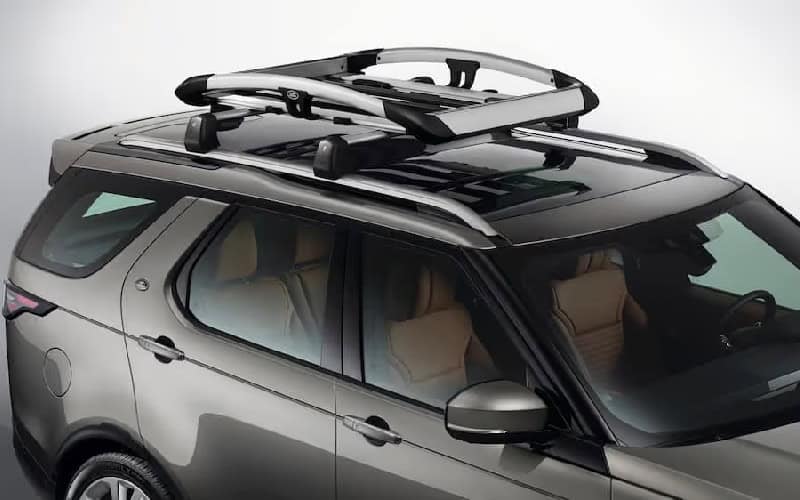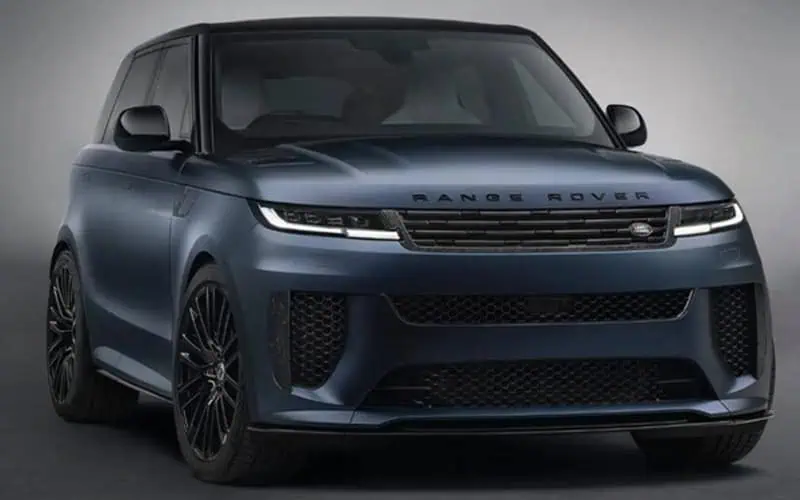The Land Rover Discovery Sport, introduced as the brand’s entry-level luxury compact SUV, has undergone significant powertrain evolution over its lifespan. While maintaining its commitment to versatility and off-road capability, the Discovery Sport transmission technology has evolved considerably from 2016 to 2025. This evolution reflects Land Rover’s ongoing pursuit of enhanced performance, efficiency, and reliability.

First Generation: The 2016-2017 Nine-Speed Automatic
When the Discovery Sport was introduced, it featured a sophisticated 9-speed automatic transmission developed in collaboration with ZF. This transmission, designated the ZF 9HP, represented a significant technological advancement over previous 6-speed units used in earlier Land Rover models. Paired with the 2.0-litre Ingenium four-cylinder turbocharged engine, this transmission offers a wider range of gear ratios for improved performance and fuel economy.
The 9-speed transmission in the 2016-2017 models featured a unique design with dog clutches instead of traditional friction clutches for specific gear shifts. This engineering decision reduced parasitic losses and improved efficiency. However, early iterations of this transmission faced challenges, including software calibration issues that sometimes resulted in hesitant shifting, unexpected downshifts, and, in some cases, the transmission unexpectedly shifting into neutral while the vehicle was in motion.
In response to these early challenges, Land Rover issued several software updates for the Transmission Control Module (TCM). A notable recall (NHTSA Campaign Number: 16V614000) addressed some of these issues by updating the TCM software to prevent unexpected shifts into neutral, a problem that posed significant safety concerns for drivers.
Mid-Generation Refinements: 2018-2021
Following the initial challenges, Land Rover made substantial refinements to the 9-speed automatic transmission for the 2018 model year and beyond. These improvements included refined shift mapping, enhanced torque converter lock-up strategies, and more sophisticated adaptive shift programming that learned from driver behaviour.
By 2020, the updated transmission featured significantly improved responsiveness and smoother operation. The software became more intelligent, adapting to both driving styles and road conditions. Engineers enhanced integration with the Terrain Response system, enabling the transmission to adjust shift patterns based on the selected driving mode—whether tackling mud, snow, or highway.
A significant update during this period was the introduction of better thermal management systems for the transmission fluid, extending service intervals and improving long-term reliability. The hydraulic control system also received updates, resulting in more precise pressure control and reduced shift shock.
The Current Generation: 2022-2025
The most recent iterations of the Discovery Sport from 2022 to 2025 feature a thoroughly refined version of the 9-speed automatic transmission. The latest model continues to utilize this transmission, now with years of evolutionary improvements behind it. Integration with the mild hybrid (MHEV) system in higher trim levels has further enhanced the transmission’s operation, allowing for smoother start-stop functionality and improved fuel economy.
The new Discovery Sport transmission benefits from the latest generation of shift mapping and predictive shift technology. The system now works in conjunction with the navigation system to anticipate upcoming road conditions and adjust shift patterns accordingly. For instance, when approaching a steep incline, the transmission preemptively downshifts to provide optimal power delivery.
The latest transmission also incorporates enhanced electronic safeguards to prevent the issues that plagued earlier models. More robust control systems monitor transmission performance in real-time, adjusting parameters to maintain optimal operation even under extreme conditions.
Technological Advancements Over the Decade
Throughout the 2016-2025 period, several key technological advancements have defined the evolution of the Discovery Sport transmission:
- Adaptive Shift Technology: The transmission now learns from driving patterns and adjusts shift timing and firmness accordingly.
- Integration with Driver Assistance Systems: The transmission operates in conjunction with adaptive cruise control and other driver assistance systems for seamless operation.
- Enhanced Off-Road Capability: Specialized low-range shift mapping for various terrain types has improved the vehicle’s off-road performance despite not having a traditional low-range transfer case.
- Reduced Friction Materials: Progressive updates have reduced internal friction, improving both efficiency and longevity.
- Intelligent Thermal Management: Active cooling systems ensure optimal transmission fluid temperature under various driving conditions.
Facts About Land Rover Discovery Sport Transmissions
1. The 9-speed automatic transmission in the Discovery Sport contains more than 480 individual components, making it one of the most complex transmissions in any compact SUV.
2. The transmission’s electronics process over 1,000 inputs per second from various vehicle systems to determine the optimal gear selection in real-time.
3. Innovative nested gear arrangements allow the nine-speed transmission to fit in a housing barely larger than the six-speed units it replaced.
4. Land Rover engineers tested the Discovery Sport transmission in extreme conditions, from -40°C in northern Sweden to +50°C in Death Valley, accumulating over 1.6 million kilometers of testing.
5. The latest model uses transmission fluid designed to last the vehicle’s lifetime under normal driving conditions, so most drivers won’t need scheduled changes.
Questions and Answers About Land Rover Discovery Sport Transmissions
What type of transmission is used in the Land Rover Discovery Sport?
- This SUV uses a 9-speed automatic transmission with advanced shift mapping and integration with the vehicle’s terrain management systems.
Has the Discovery Sport always used a 9-speed transmission?
- Yes, since its introduction for the 2016 model year, it has utilized a 9-speed automatic transmission, though it has undergone significant refinements and improvements over the years.
What were the common transmission issues in early Discovery Sport models?
- Early models (2015-2017) experienced issues, including the transmission unexpectedly shifting into neutral, rough shifting, delayed engagement, and sudden jerking. These were addressed through multiple software updates and mechanical refinements.
How does the Terrain Response system interact with the transmission?
- This system adjusts the transmission’s shift patterns, response times, and gear selection based on the selected terrain mode (such as Grass/Gravel/Snow, Mud Ruts, or Sand), optimizing performance for specific driving conditions.
Can the Discovery Sport transmission be manually shifted?
- Yes, it features steering wheel-mounted paddle shifters that allow the driver to manually select gears when desired, though the transmission will still protect against improper shifts that could damage the engine or transmission.
What improvements were made to the transmission between 2016 and 2025?
- Improvements include enhanced software calibration, better thermal management, reduced internal friction, integration with hybrid systems on applicable models, and more sophisticated adaptive shift technology.
Does the Discovery Sport transmission require special maintenance?
- While early models recommended transmission fluid changes at specific intervals, the latest models feature “filled-for-life” transmission fluid under normal driving conditions. However, severe use, especially frequent off-roading, may require service at specialized intervals.
How does the transmission in the Discovery Sport compare to competitors?
- The 9-speed automatic offers more gear ratios than many competitors, which typically feature 6-8 speeds. This provides theoretical advantages in both performance and efficiency across a wider range of driving conditions.
Is the transmission in the Discovery Sport the same as in other Land Rover models?
- While the basic 9-speed architecture is the same as some other models, the transmission features unique calibration and programming specific to its intended use and performance characteristics.
How does the transmission contribute to the Discovery Sport off-road capability?
- The transmission’s wide ratio spread provides both low-end torque multiplication for off-road scenarios and efficient high-gear cruising. When combined with the Terrain Response system, it automatically adapts to deliver optimal power for various surfaces and conditions.


